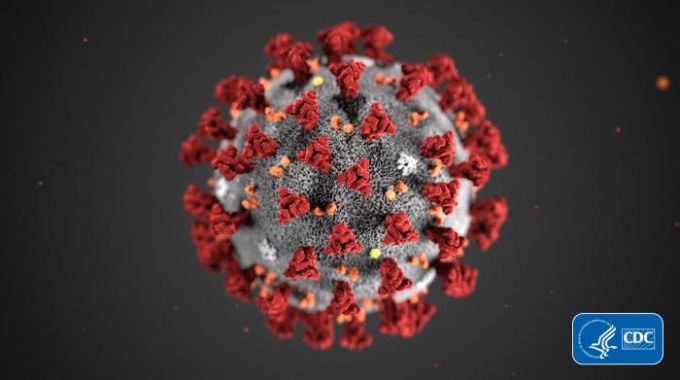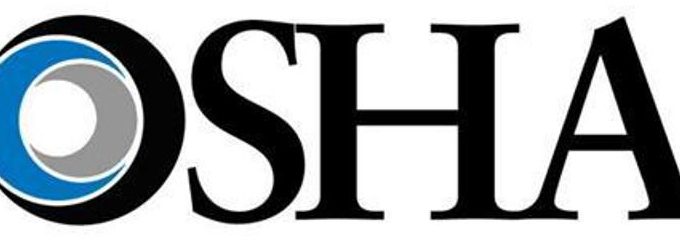The US Occupational Safety and Health Administration (OSHA) has specific requirements for sharps containers in…

COVID-19 FAQ for Dental Practitioners
 The US Centers for Disease Control and Prevention (CDC) provides important and up-to-date information to the public and healthcare providers on the status of reported cases of Coronavirus Disease 2019 (COVID-19), which is the respiratory disease caused by the outbreak of novel coronavirus named SARS-CoV-2.
The US Centers for Disease Control and Prevention (CDC) provides important and up-to-date information to the public and healthcare providers on the status of reported cases of Coronavirus Disease 2019 (COVID-19), which is the respiratory disease caused by the outbreak of novel coronavirus named SARS-CoV-2.
Dentists are urged to view the CDC COVID-19 situation summary and CDC’s COVID-19 FAQ for Health Professionals for current information and guidance. Respiratory hygiene/cough etiquette infection control measures along with contact precautions are currently recommended for preventing transmission of COVID-19 and all flu-like illnesses in dental healthcare settings. Standard precautions should be taken with all patients, at all times.
Screening Patients
Patients with an acute respiratory illness may present for dental treatment at outpatient dental settings. The primary infection control goal is to prevent transmission of disease to other patients and dental healthcare personnel (DHCP).
1. When screening patients for COVID-19, what information should we seek?
According to the CDC, to screen for COVID-19, healthcare facilities, including dental offices, should screen patients before proceeding with an appointment. Information to take note of:
- Any individual who exhibits or reports signs of acute respiratory illness such as coughing, fever and shortness of breath.
- Recent travel to any locations that have a Travel Health Notice for COVID-19. Verify when the patient returned from high-risk areas. If the patient reports that at least two weeks have passed since their return from one of the identified regions and no symptoms have presented, the dental office can proceed with the appointment. When local, state or federal public health officials declare the disease is at the community level, screening for travel is not necessary.
- Close contact with an individual diagnosed with COVID-19.
DHCP are strongly advised to reschedule elective and non-essential procedures, and to delay all non-urgent appointments for patients at a high risk for COVID-19 transmission.
Since recommendations may change as additional information becomes available it’s a good idea to check the CDC website for COVID-19 infection control updates.
2. What infection control procedures must we implement for staff to follow at patient intake/reception to ensure symptomatic patients do not expose other patients or DHCP?
In California, Cal/OSHA’s Aerosol Transmissible Disease (ATD) Standard requires healthcare providers to follow certain precautions to prevent exposure to ATD’s. Because dentists do not treat patients for symptoms caused by ATDs and do not perform any procedures that are considered “cough-inducing” by the CDC, California dentists are conditionally-exempt from ATD requirements so long as they do the following.
- Patients with an acute respiratory illness should be identified at check-in and treatment deferred if they are symptomatic.
- Screening procedures are documented as part of the office’s Injury and Illness Prevention Program (IIPP).
- The office follows state requirements and CDC recommendations for dental infection control
- Employees are trained on the screening and infection control procedures.
Additional recommended measures for the waiting room include the following:
- Post signs at entrances asking patients with symptoms of respiratory infection to:
-
- Cover your mouth and nose when coughing or sneezing.
- Use tissues and throw them away.
- Wash your hands or use a hand sanitizer every time you touch your mouth or nose.
- Provide tissues and no-touch receptacles for their disposal.
- Provide resources for performing hand hygiene in or near waiting areas.
- Routine cleaning and disinfection strategies should continue to be followed.
- Consider having patients wait in their cars for treatment instead of in the waiting room.
- Remove all magazines, toys, etc. from the waiting area to prevent cross contamination.
- Limit access to the waiting room to patients only.
Infection Control
3. What are symptoms of COVID-19?
COVID-19 causes illness ranging from mild to severe and, in some cases, can be fatal. Symptoms typically include fever, cough, and shortness of breath. Some people infected with the virus have reported experiencing other non-respiratory symptoms. Other people, referred to as asymptomatic cases, have experienced no symptoms at all. According to the CDC, symptoms of COVID-19 may appear in as few as 2 days or as long as 14 days after exposure.
4. What if availability of personal protective equipment (PPE) required during dental procedures becomes limited or we run out (i.e. facemasks)?
The CDC has not changed its guidance on single-use disposable facemasks, which are regulated by US Food and Drug Administration (FDA) to be single use and should be worn once and discarded.
The CDC’s Guidelines for Infection Control in Dental Health-Care Settings-2003 recommends the following: 1) Wear a surgical mask and eye protection with solid side shields or a face shield to protect mucous membranes of the eyes, nose, and mouth during procedures likely to generate splashing or spattering of blood or other body fluids; 2) Change masks between patients, or during patient treatment if the mask becomes wet.
The CDC urges DHCP concerned about healthcare supply for PPE to monitor Healthcare Supply of Personal Protective Equipment for updated guidance.
The FDA has stated that it is continuing to monitor the domestic and global supply chain for potential disruptions or shortages and will “use all available tools to react swiftly and mitigate the impact to U.S. patients and healthcare professionals.” In the meantime, the agency encourages healthcare facilities to report any supply disruptions to deviceshortages@fda.hhs.gov.
5. Should my office provide face masks to patients while they wait for treatment? What other strategies can we follow to practice social distancing recommended by public health agencies?
DHCP are advised to only proceed with appointments for patients who do not show symptoms, and the CDC does not recommend a facemask for people who are well. Facemasks should be used by people who show symptoms of COVID-19 to help prevent the spread of the disease to others.
In small or crowded waiting rooms that offer less than six feet of distance between patients, office staff can offer patients the option to wait in their cars and receive a phone call or text message when it is their turn for treatment.
Managing Workplaces
6. How should we manage our staff with respect to COVID-19?
Businesses should follow the CDC’s Interim Guidance for Businesses and Employers to plan, prepare, and respond to COVID-19 infections. The CDC recommendations include the following:
- Actively encourage sick employees to stay home.
- Ensure that your sick leave policies are flexible and consistent with public health guidance and that employees are aware of these policies.
- Do not require a healthcare provider’s note for employees who are sick with acute respiratory illness to validate their illness or to return to work, as healthcare provider offices and medical facilities may be extremely busy and not able to provide such documentation in a timely way.
- Employers should maintain flexible policies that permit employees to stay home to care for a sick family member. Employers should be aware that more employees may need to stay at home to care for sick children or other sick family members than is usual. Employees who are well but who have a sick family member at home with COVID-19 should notify their supervisor and refer to CDC guidance for how to conduct a risk assessment of their potential exposure.
- Emphasize respiratory etiquette and hand hygiene by all employees.
- Instruct employees to clean their hands often with an alcohol-based hand sanitizer that contains at least 60-95% alcohol, or wash their hands with soap and water for at least 20 seconds. Soap and water should be used preferentially if hands are visibly dirty.
- Provide soap and water and alcohol-based hand rubs in the workplace. Ensure that adequate supplies are maintained. Place hand rubs in multiple locations or in conference rooms to encourage hand hygiene.
- Perform routine environmental cleaning. Clean all frequently touched surfaces in the workplace, such as workstations, countertops, and doorknobs. Use the cleaning agents that are usually used in these areas and follow the directions on the label.
- If an employee is confirmed to have COVID-19, employers should inform fellow employees of their possible exposure to COVID-19 in the workplace but maintain confidentiality as required by the Americans with Disabilities Act (ADA). Employees exposed to a co-worker with confirmed COVID-19 should refer to CDC guidance for how to conduct a risk assessment of their potential exposure.
Resources
- OSHA Guidance on Preparing Workplaces for COVID-19
- CDC’s Interim Infection Prevention and Control Recommendations for Patients with Suspected or Confirmed Coronavirus Disease 2019 (COVID-19) in Healthcare Settings
- CDC’s Interim Guidance for Businesses and Employers to plan, prepare, and respond to COVID-19 infections
- ADA Coronavirus Resource Center for Dentists
Since 1992, OSHA Review, Inc. has provided dental professionals with comprehensive programs to support regulatory compliance and infection control. We are a registered continuing education provider in the state of California, specializing in Dental Practice Act, infection control, and OSHA training.


